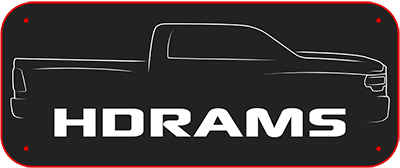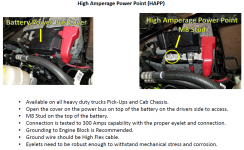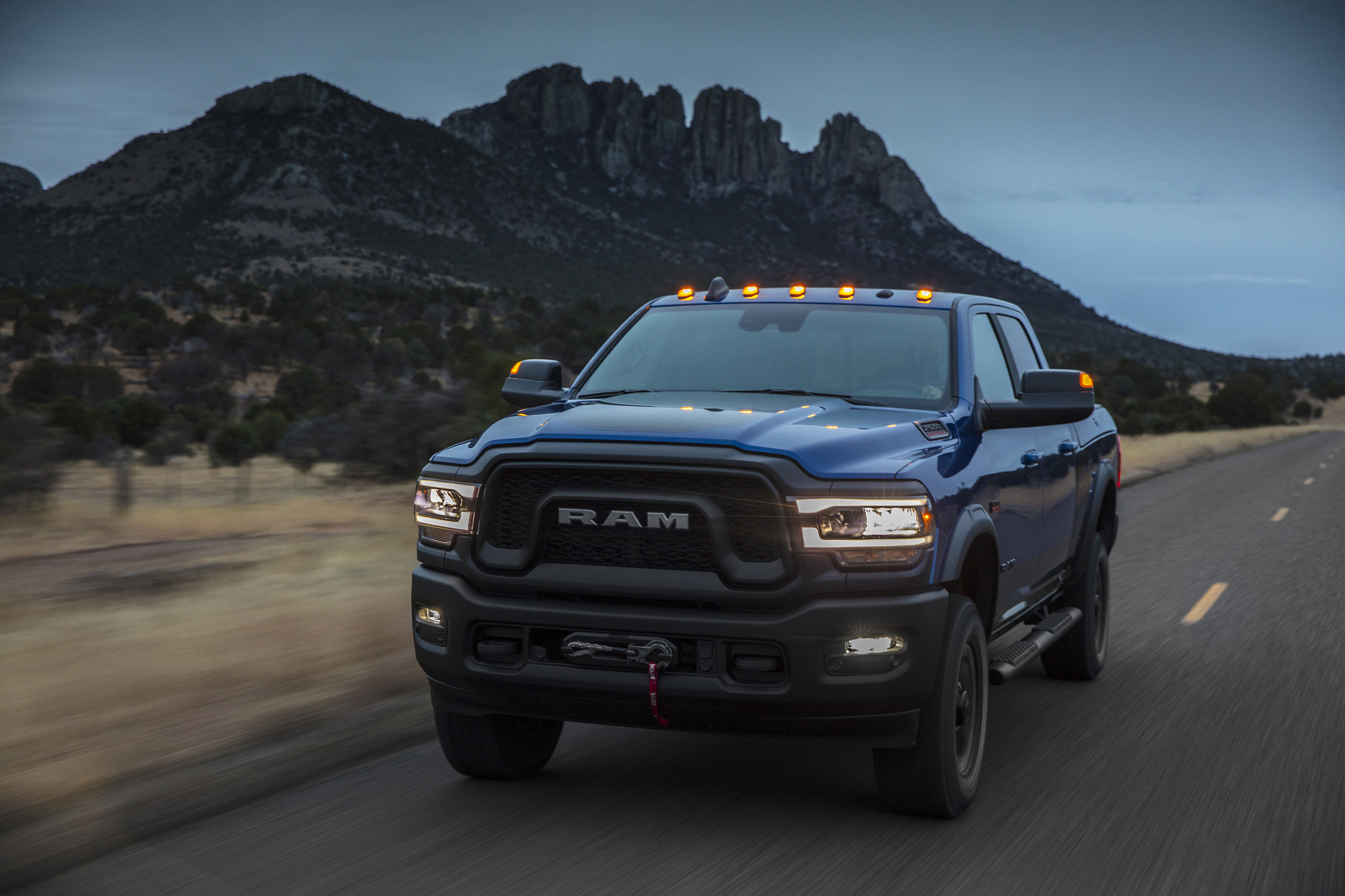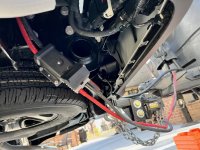Some thoughts on the 7-pin trailer connector tow power wire and a DC-DC charger...
I'm also in the process of buying and installing a DC-DC charger for our trailer.
As with most projects, I tend to overthink instead of simply installing something and moving on to the next project. I'm a retired mechanic and have plenty of time to overthink.
What concerns me about simply installing a DC-DC charger per the instructions, is the original 7-pin electrical connection between the trailer and the truck.
Specifically, the +12v tow wire that connects the truck's battery to the trailer's battery.
Looking at the wiring diagrams, I see that F30 feeds this wire and it goes directly from the fuse box back to the 7-pin connector. There are a couple of connectors in between but it is always live even with ign off.
What is bothering me is that there isn't any diode or similar electrical device that prevents trailer voltage from back feeding to the truck's charging system when the trailer's DC-DC charger is active.
If I install a DC-DC charger in the trailer, I will essentially have two charging systems connected together thru the +12v tow wire on the 7-pin connector.
The truck's charging system will continue to sense and charge the trailer's battery (at a very low amperage) and the trailer's DC-DC charger will also charge the truck's batteries thru the 7-pin connection.
I've been reading about modern alternators that are "smart" and I think I have a basic idea of how it works.
The alternator is controlled by the PCM, bellow is a clip/paste I found describing the Intelligent Battery Sensor.
After reading this, I am wondering if having two charging systems connected together will "confuse" the truck's charging system?
"The IBS serves two primary purposes. The first is to provide the Powertrain Control Module (PCM) with both
immediate and historical calculated battery information, so the PCM can control the charging system. The second
purpose is to provide calculated data to the BCM for operation of the load-shedding feature. A fused power circuit
and the bus are connected to the IBS though a two-terminal connector.
The IBS contains a low value resistor, or shunt. The shunt creates a voltage drop, which is read by an internal
microcontroller to determine the current flow in and out of the battery. In addition to the shunt, the IBS contains a
sensor to monitor the battery’s temperature. Data gathered by the IBS, including temperature, voltage, and current
measurements, are transmitted over a communication bus to the BCM, which is the LIN master node of the IBS. In
addition to real-time measurements, the IBS transmits some calculated battery data over the bus, including SOC and
State of Function (SOF). These values are calculated by storing measurements over time.
SOC = Battery state of charge (or SOC) is expressed as a percentage. The IBS calculates the SOC based on
measured voltage, charge and discharge rates. Therefore, SOC is not a direct percentage of battery voltage.
SOF = Battery State of Function (or SOF) is a calculated prediction of the lowest voltage the battery will drop
to during engine cranking.
The is readable and diagnosable by using the diagnostic scan tool which can display all of the
available parameters needed for vehicle servicing or troubleshooting.
battery sensor
When the IBS is powered up for the first time or is powered after a battery disconnect, it enters a “recalibration”
phase, where the IBS must recognize the type of battery and its characteristics and state. This information is sent to
the IBS by the BCM. In this phase the tolerances on the state functions (SOC, SOF) are greater than in normal
working condition. When the IBS is disconnected from the battery, the device loses its stored memory. When power
is restored, the IBS starts a relearn process. Until the relearn process is complete, accurate battery state information
is unavailable to other vehicle systems. The IBS relearn process requires one start and at least 4 hours with the
vehicle off, electrical system asleep. Remember, the relearn process is restarted every time power is reconnected to
the IBS."




